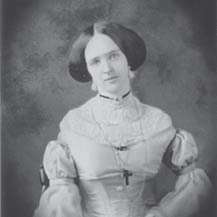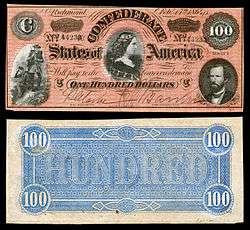Lucy Pickens

Lucy Petway Holcombe Pickens (June 11, 1832 – August 8, 1899) was a 19th-century American socialite, known during and after her lifetime as the "Queen of the Confederacy". She was described as "beautiful, brilliant, and captivating" by her male contemporaries, and this perception of her helped shape the stereotype of the "Southern belle".
Life
She was born to Beverly LaFayette Holcombe and Eugenia Dorothea (Hunt) Holcombe at the family plantation near La Grange, Tennessee. She attended La Grange Female Academy before switching to a finishing school in Bethlehem, Pennsylvania, with older sister Anna Eliza, from 1846–1848. In 1848, the Holcombes moved to Marshall, Texas. They lived in the Capitol Hotel while waiting for the construction of their plantation Wyalucing.
In the summer of 1857, Lucy met Colonel Francis Wilkinson Pickens of South Carolina, who proceeded to court her with little success. In January 1858, after his defeat for a Senate seat, he accepted an appointment as the US ambassador to Russia. Suddenly she accepted his previous proposal and they were married at Wyalucing on April 26, 1858.
Lucy became a favorite at the Russian court of Alexander II. She and her husband were befriended by Alexander and his wife Maria Alexandrovna. Lucy gave birth while in Russia to a daughter, Francis Eugenia Olga Neva, who was also known as Douschka Pickens in the Winter Palace. The tsar and tsaritsa became godparents of the Pickens' daughter, and the tsar gave her the nickname of Douschka, meaning "Darling" in Russian.
A longing for South Carolina and worries about its leaning toward secession caused the Pickens family to return home in August 1860. Francis W. Pickens was elected governor by the General Assembly of South Carolina on December 17, three days before the state seceded from the Union. An advocate of the secession of the U.S. Southern states, Lucy Holcombe Pickens was the only woman to be depicted on the currency of the Confederate States of America (three issues of the $100 CSA bill and one issue of the $1 CSA bill, which were printed in Columbia, South Carolina). She was also featured on one issue of $1,000 CSA loan certificates. In April 1861, Lucy and friends witnessed the shelling of Fort Sumter from a rooftop in Charleston, South Carolina. In November 1861, a unit of the Confederate States Army was formed; it was called the Holcombe Legion in her honor. She designed and sewed its flag. It is claimed that she financed its equipment by the sale of some of the jewels given to her by the tsar.
Pickens wrote a novella entitled The Free Flag of Cuba, a romanticized account of the exploits of Cuban freedom fighter Narciso López. It was published in 1854 under the name "H. M. Hardimann" and, until recently, was believed lost.
Further reading
- Edmunds, John B., Jr., "Francis W. Pickens and the Politics of Destruction", University of North Carolina Press, 1986. ISBN 0-8078-1699-X
- Lewis, Elizabeth W., "Queen of the Confederacy: The Innocent Deceits of Lucy Holcombe Pickens", University of North Texas Press, 2002. ISBN 1-57441-146-2
- Stone, DeWitt B., Jr., "Wandering to Glory: Confederate Veterans Remember Evans' Brigade", University of South Carolina Press, 2002. ISBN 1-57003-433-8
- The Free Flag of Cuba, edited with an introduction by Orville and Georganne Burton. Louisiana State University Press, 2002. ISBN 0-8071-2834-1
External links
- Lucy Pickens from the Handbook of Texas Online
- "Queen of the Confederacy: The Innocent Deceits of Lucy Holcombe Pickens" at Google Books
